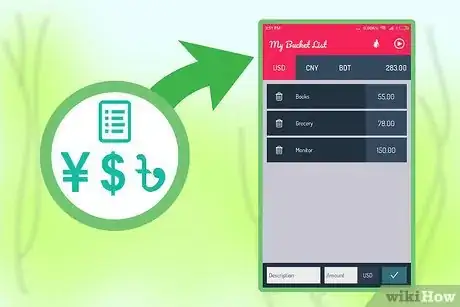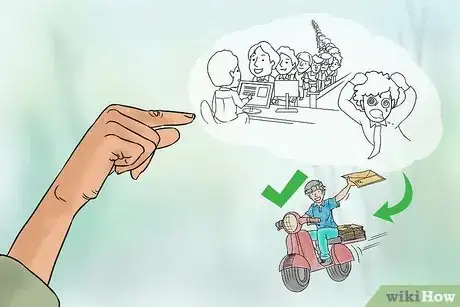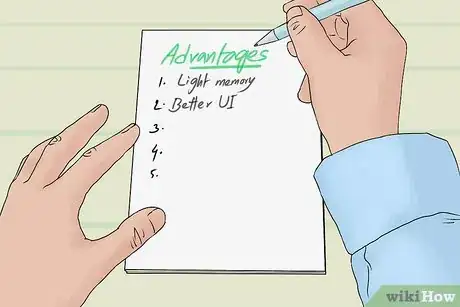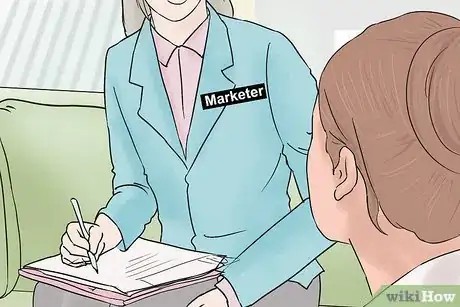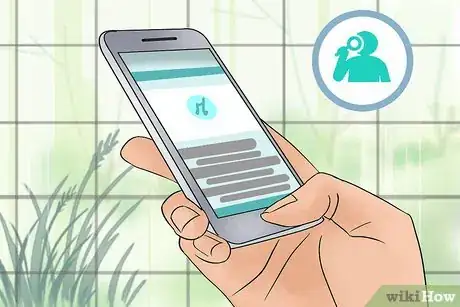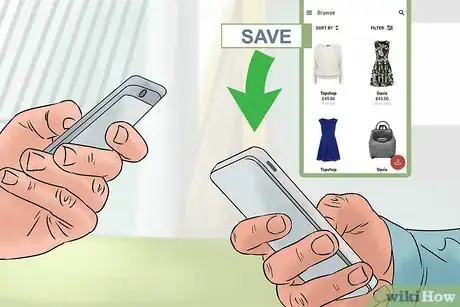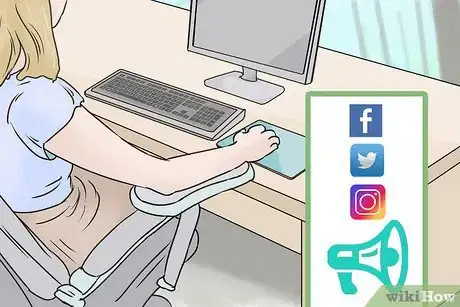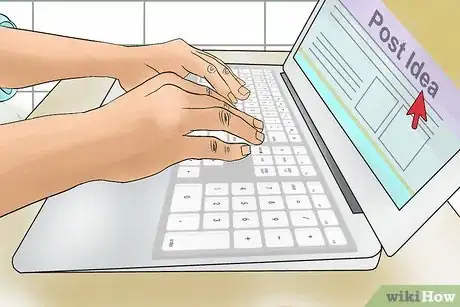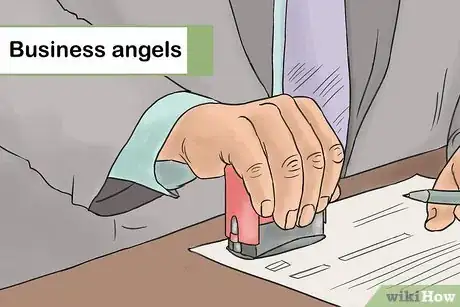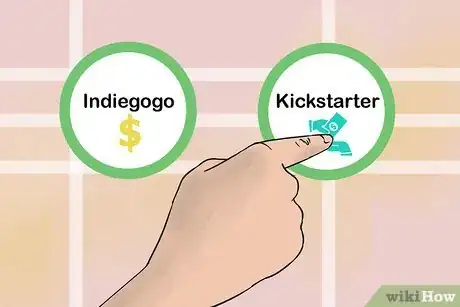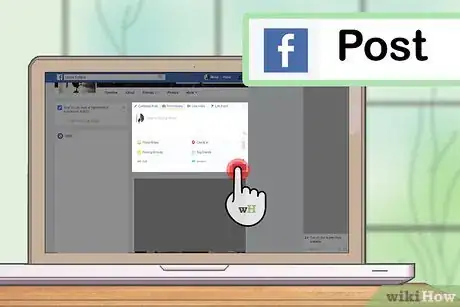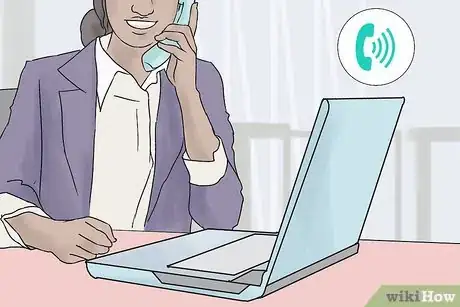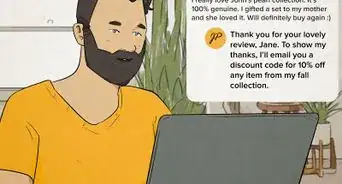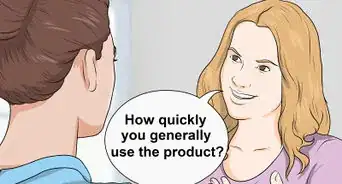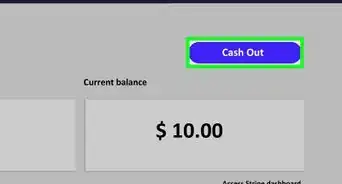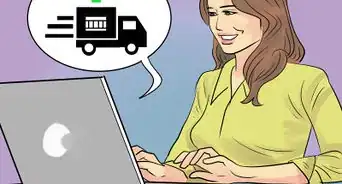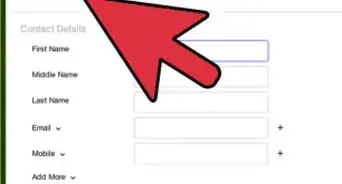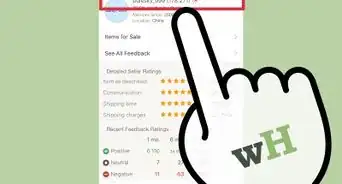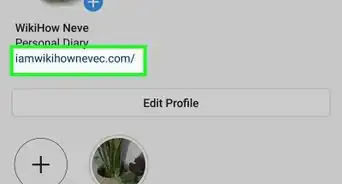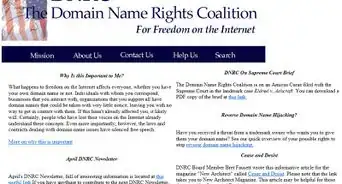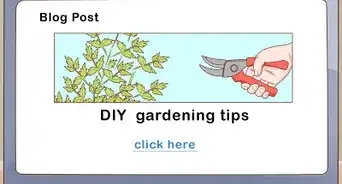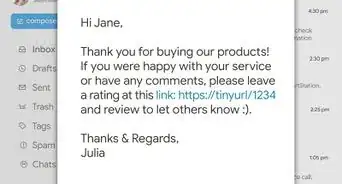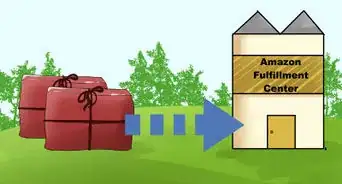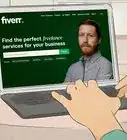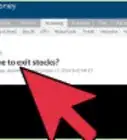This article was co-authored by Jeremy Rutman, PhD. Dr. Jeremy Rutman is a Patent Attorney and the CEO and Founder of RutmanIP, a boutique intellectual property firm in Israel. With over 15 years of experience, Dr. Rutman specializes in drafting patent applications in various fields such as physics, computer hardware and software, electrical engineering, mechanical engineering, green energy, and software. He holds a BS degree in Physics from Harvard University, where he graduated cum laude, and an MS and Ph.D. in Physics from the Technion - Israel Institute of Technology. Dr. Rutman has extensive experience turning start-up ideas into strategic assets and has published his work in many leading professional journals in the field.
There are 12 references cited in this article, which can be found at the bottom of the page.
This article has been viewed 18,517 times.
When you come up with a cool idea for an app, nothing is more rewarding than seeing that app come to life. Producing an app takes a lot of time, money, and effort. A successful app needs a good business concept describing its purpose and target audience. Once you have your business concept in writing, you can use it to reach potential buyers. Develop your idea and advertise it to make it an appealing app worthy of investment.
Steps
Writing a Business Concept
-
1Write down the primary audience for your app. The primary audience is the group of people most likely to use your app. Think about who your app is meant to appeal to and who is most likely to use it. Create a basic profile of your audience, listing relevant details like age, gender, and education level. Having a solid target audience shows potential buyers that your app can be marketed successfully.[1]
- For instance, you may come up with a task tracker app that functions like a game. Your audience will probably be young adult gamers who need help being more productive.
- Pitching an app idea is a lot like making a business plan. Outlining your idea’s potential increases your chances of selling it.
-
2Describe the main functions of your app. Go into detail about what your app does. Explain how the app works and how a user interacts with it. Doing this gives buyers a clear image of what you hope to accomplish with the app. A good idea has a clear purpose that isn’t well-covered by existing apps.[2]
- For example, you may wish to design a fashion app. You decide your app will search stores to recommend outfits a user is likely to buy. The app helps people who want to dress nicely but don’t have a lot of time to shop.
Advertisement -
3Explain what problems your app helps your audience solves. Successful apps have something important to offer to users. This may be entertainment, saving time, saving money, or a number of alternative reasons. Addressing these problems makes your idea appealing to both customers and buyers. If you can, list problems similar apps on the market fail to cover.[3]
- For example, a social media platform like Facebook enables friends to keep in touch with one another. It is simple and easy to use, and now there are many different social media sites.
- If you’re making an exercise app, you may be teaching people a healthy lifestyle. If you’re creating a weather app, you may be helping people track the weather. Keep in mind these kinds of apps are common, so your idea needs to be unique in order to stand out.
-
4List the advantages your idea has over similar apps. Basically, explain why a customer might download your app instead of a similar one. The advantages you write about reflect your app’s purpose and function. Elements like a user-friendly design, quality content, or a unique function are all good advantages to show buyers.[4]
- For example, design your fashion app to find sales from many different sources. Incorporate different body types and color-matching systems to help users personalize their outfits.
- A good radio app enables users to easily navigate to pages for specific music genres and popular artists. It may include a variety of genres and even traditional radio stations.
-
5Explain how you will monetize your app to be profitable. There are quite a few ways to make apps profitable. Some apps cost money to download, while others offer advertisement space. You could have in-app purchases or partner with companies to link to their products. The monetization method you choose depends on your target audience and how they use the app.[5]
- A lot of gaming apps have their own currencies. Users buy in-app currencies to change the graphics, unlock features, or get other benefits.
- If you’re making a meditation app, for example, you could sell different lessons or advertise related products.
-
6Come up with ways to promote your app to expand its reach. Think of ways to reach your target audience, such as through advertisements. Cast as wide of a net as possible to make your idea more appealing to buyers. You can hire a marketing expert to help you with this. If you find an interested buyer, chances are they will also have marketers to help promote your app.[6]
- Optimize your app with terms and a description users are likely to search for. For instance, list a radio app in the app store with words like free, radio, and music.
Developing Your Idea
-
1Research competing apps already available on phones. Visit the Play Store on Android devices and the App Store on iOS devices. Think of some basic keywords that describe your app idea. Then, use these keywords to find apps similar to the idea you have in mind. Test the apps out, read the reviews, and find out how they compare to your ideas.
- For example, you might type weather, temperature, or forecast to find weather predicting apps.
-
2Analyze the pros and cons of your idea to see if it can succeed. Compare your idea to the apps already available. A fresh idea sells much better than one that has been done before. If you don’t see a lot of advantages in designing a new app, don’t expect many companies or customers to be interested in it. Capitalize on ways your app can do better than other products people are using.[7]
- For example, the dating app Bumble is different than Tinder. On Bumble, only women can initiate contact, leading to stronger, safer matches.
- Creating a new social media app would be very costly and difficult. Facebook, Instagram, and Twitter are all very popular. People may not be willing to try your app unless it is wildly unique.
-
3Get a patent to protect your idea if you plan on making it. If you decide to move forward with your idea, speak to a patent lawyer. A patent lawyer files paperwork with the government to protect your right to the idea. Without a patent, someone else may steal your idea or build a similar app before you do.[8]
- Getting a patent is pretty costly. The application fee costs $200 to $400 USD. Add on the lawyer’s rate, usually $300 to $500 per hour.
- You may be able to apply for a patent yourself by visiting your local patent office. You will need to be able to describe your app’s function in detail. Keep in mind that if you make a mistake, someone else may be able to use your idea.
-
4Build a working prototype of your product to show investors. Investors are more likely to buy a fleshed-out idea. Create a prototype to put into a potential buyer’s hands. The more you are able to build, the more likely you are to attract potential buyers. Start out by getting experience as an app developer or hire someone else to build the app for you. Make the prototype as great as you can, or even release the app to increase your chances of selling it.[9]
- To find programmers, try searching online freelance sites or talent networks. You could also find an investor with programming experience and offer them equity in your app.
- For example, if you’re designing a fashion app, you might program the app to search for or save outfits.
-
5Market the app to bring potential users and buyers to it. Start advertising your app online, in app stores, and through word of mouth. Advertising may give you an idea of how successful your app is likely to be. If customers show interest or even download your prototype, you can prove to buyers that your idea is a good one.[10]
- For example, try making a basic website for your app. Include a mock link to a download page. Then, track how many people click the link through something like Google Analytics to get an idea of how much of an audience there is for your app.
-
6Select a percentage of the profit you wish to gain from selling your idea. Coming up with a price for an unfinished idea is tricky, but keep a basic estimate in mind. The exact selling price depends on many factors, including how much work you put into app development. Appealing ideas with strong audiences and many buyers are more profitable. You can ask for a flat fee like $5,000 for the idea or a percentage of the profits, such as 20%.[11]
- A flat fee is better if you aren’t going to be very involved in the development or don’t think the app will be a big seller.
- With a percentage fee, you make money on every sale, even after turning the idea over to a developer. This is useful since you can’t know how much an idea is worth until it is a finished app.
- For example, if you’re creating a new file sharing app, you might pitch the app to a developer and ask for a fee. If you do a lot of the hard work developing the app’s framework, ask for more compensation.
Finding Potential Investors
-
1Post your idea on a startup service if you’re willing to implement it. Startup websites are a great way to build your own product from home. You post your idea and your work online, then wait for investors to offer you money. Most investors expect you to continue working on and supporting your app to make it successful, so this may not be the best option if you are trying to sell a single idea.[12]
- Some examples of startup websites include Startup.co and Gust.com.
- Business incubators and accelerators are similar, but many of them work on a local level. A few examples include 500Startups and TechStars.
- A startup website is useful for new businesses. You can raise money to create your own company that designs even more apps.
-
2Register with a business angels network to establish contacts. Angel investors offer money in exchange for part ownership of your idea. If your idea is good, you may be able to sell it outright this way. In addition, many investors have a wide range of business contacts that can help make your app a reality. Many times, these contacts manage your project to completion for you.[13]
- A few examples of business angel websites include Angel Capital Association, Angel Investment Network, and Funded.com.
-
3Start a crowdfunding campaign to reach potential customers. Crowdfunding campaigns mostly raise money from people who are interested in your product. The crowdfunding page serves as advertising, and you can give your backers incentives to raise more funding. Make sure you are ready to follow through with your campaign promises if you get funding.[14]
- A couple of examples of crowdfunding websites include Indiegogo and Kickstarter.
- If you’re lucky, you may get an offer from a company interested in buying your idea. It has happened with some crowdfunded games, for instance. You have a better chance of doing this if your idea is popular and well-advertised.
-
4Post your idea on social media to reach more business contacts. Set up a profile on a social media service meant for professionals. These kinds of networks focus on business contacts. Make frequent posts about your app idea to advertise it to potential buyers. You may be able to make new contacts and speak to new investors.[15]
- Make sure you have a good patent. Advertising your idea online is risky. Avoid posting specific details other people might take, especially if you don’t have a patent.
-
5Contact private companies to sell an idea directly to them. Selling an idea directly is challenging, so wait until your idea is fleshed out. Call or send a message to a company that could use your app. Try contacting companies dealing with business project investments. Many of these companies buy good ideas and patents.[16]
- Your success depends on your business concept and how well you advertise it to potential buyers. Most buyers look for well-defined ideas and may require a working prototype.
Expert Q&A
-
QuestionIs it bad to have competition?
 Jeremy Rutman, PhDDr. Jeremy Rutman is a Patent Attorney and the CEO and Founder of RutmanIP, a boutique intellectual property firm in Israel. With over 15 years of experience, Dr. Rutman specializes in drafting patent applications in various fields such as physics, computer hardware and software, electrical engineering, mechanical engineering, green energy, and software. He holds a BS degree in Physics from Harvard University, where he graduated cum laude, and an MS and Ph.D. in Physics from the Technion - Israel Institute of Technology. Dr. Rutman has extensive experience turning start-up ideas into strategic assets and has published his work in many leading professional journals in the field.
Jeremy Rutman, PhDDr. Jeremy Rutman is a Patent Attorney and the CEO and Founder of RutmanIP, a boutique intellectual property firm in Israel. With over 15 years of experience, Dr. Rutman specializes in drafting patent applications in various fields such as physics, computer hardware and software, electrical engineering, mechanical engineering, green energy, and software. He holds a BS degree in Physics from Harvard University, where he graduated cum laude, and an MS and Ph.D. in Physics from the Technion - Israel Institute of Technology. Dr. Rutman has extensive experience turning start-up ideas into strategic assets and has published his work in many leading professional journals in the field.
Patent Attorney Competition is not necessarily bad. For instance, when the person who invented dried ramen noodles noticed that his competition was ramping up, he was very happy. He was excited because the competition meant dried ramen noodles were becoming a known thing. Although these competitors were selling more, he was also selling more.
Competition is not necessarily bad. For instance, when the person who invented dried ramen noodles noticed that his competition was ramping up, he was very happy. He was excited because the competition meant dried ramen noodles were becoming a known thing. Although these competitors were selling more, he was also selling more.
Warnings
- Building and selling an app can be costly. Including designing, coding, and patenting, making an app often costs $3,000 to $5,000 or more.⧼thumbs_response⧽
- Not all ideas are profitable, so be aware of the risks before funding development. Remember that you may not be able to sell your app.⧼thumbs_response⧽
References
- ↑ https://www.forbes.com/sites/jaysondemers/2013/08/27/6-steps-to-decoding-your-target-audience/#105071fb15cf
- ↑ https://applikeysolutions.com/blog/how-to-sell-an-app-idea
- ↑ https://applikeysolutions.com/blog/how-to-sell-an-app-idea
- ↑ https://applikeysolutions.com/blog/how-to-sell-an-app-idea
- ↑ https://www.forbes.com/sites/eladnatanson/2018/02/08/service-based-monetization-its-time-for-a-new-app-revenue-stream/#c3523c6cb7de
- ↑ https://www.zdnet.com/article/so-you-have-an-app-idea-and-want-to-make-a-bajillion-bucks/
- ↑ https://leandecisions.com/2012/09/how-to-create-an-effective-weighted-pro-con-list.html
- ↑ https://thenextweb.com/insider/2015/05/07/does-your-mobile-app-need-a-patent/
- ↑ https://hackernoon.com/create-a-working-conceptual-prototype-for-your-app-in-less-than-a-week-ce904fe3bc5d
- ↑ https://www.youtube.com/watch?v=6qAcPVaL2lQ&feature=youtu.be&t=77
- ↑ https://applikeysolutions.com/blog/how-to-sell-an-app-idea
- ↑ https://www.rocketspace.com/tech-startups/startup-funding-101-the-5-most-reliable-ways-to-get-funded
- ↑ https://www.forbes.com/sites/allbusiness/2015/02/05/20-things-all-entrepreneurs-should-know-about-angel-investors/
- ↑ https://www.rocketspace.com/tech-startups/startup-funding-101-the-5-most-reliable-ways-to-get-funded
- ↑ https://applikeysolutions.com/blog/how-to-sell-an-app-idea
- ↑ https://medium.com/lessons-from-mckinsey/how-to-pitch-your-idea-for-investment-617f4b2f622
- ↑ https://www.igeeksblog.com/why-app-store-is-charging-30-percent-commission/

